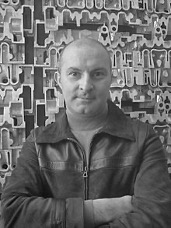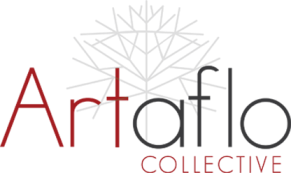
Arman
In 1961, Arman made his debut in the United States, the country which was to become his second home. During this period, he explored creation via destruction. The “Coupes” and the
“Colères” featured sliced, burned, or smashed objects arranged on canvas, often using objects
with a strong “identity” such as musical instruments (mainly violins and saxophones) or bronze statues.
Early on, it was apparent that Arman’s concept of the accumulation of vast quantities of
the same objects was to remain a significant component of his art. He had originally focused
more attention on his abstract paintings, considering them to be of more consequence
than his early accumulations of stamps. Only when he witnessed viewer reaction to his first
accumulation in 1959 did he fullly recognize the power of such art. In 1962, he began welding
together accumulations of the same kinds of metal objects, such as axes.
From 1959 to 1962, Arman developed his most recognizable style, beginning with his two most renowned concepts: “Accumulation” and “Poubelle” (French for “trash bin”). Accumulations were collections of common and identical objects which he arranged in polyester castings or within Plexiglas cases. His first welded accumulations were created in 1962. The “Poubelles” were collections of strewn refuse. In 1960, he filled the Galerie Iris Clert in Paris with garbage, creating “Le Plein” (“Full Up”) as a counterpoint of the exhibition called “Le Vide” at the same gallery two years earlier by his friend Yves Klein. These works began to garner the attention of the European art community.
In October 1960, Arman, Yves Klein, François Dufrêne, Raymond Hains, Martial Raysse,
Daniel Spoerri, Jean Tinguely and Jacques Villeglé, and art critic and philosopher Pierre
Restany founded the Nouveau réalisme group. Joined later by Cesar, Mimmo Rotella, Niki de
Saint Phalle, and Christo, the group of young artists defined themselves as bearing in common
their “new perspective approaches of reality.” They were reassessing the concept of art and the artist for a 20th-century consumer society by reasserting the humanistic ideals in the face of industrial expansion.
1928 Born in Nice, France
Studied at the Ecole Nationale des Arts Décoratifs in Nice
Studied art history at the Ecole du Louvre
2005 Died in New York City
■ Selected Group Exhibitions
2013 Cycles, Paul Kasmin Gallery, New York
2011 Arman, retrospective, Museum Tinguely, Feb. 2011, Basel, Switzerland
Arman-in les Baux de Provence, Les Baux-de-Provence
2010 Arman, a retrospective, Centre Georges Pompidou, Paris
2008 Arman, Palazzo Bricherasio, Turin
2006 Arman—Subida al Cielo, Musée d’ Art Moderne et d’Art Contemporain Nice, France
Arman—A Tribute to Arman, Marlborough Gallery, New York
Arman—No Comment, Galerie Georges-Phillippe & Nathalie Vallois, Paris
2005 Hommage a Arman, Galerie Anne Lettree, Paris
2004 Omaggio ad Arman Arte Silva, Sergno
Arman—Peinture, Marlborough Monaco, Monaco
2003 Awarded 2003 Sport Artist of the Year, The American
Sport Art Museum and Archives, United States Sports Academy, Daphne, Alabama
Arman: Arman, Museum of Contemporary Art of Teheran, Teheran, Iran
Arman, Marlborough New York City
2002 Arman: Works on Paper, Villa Haiss Museum, Zell, Germany
2001 Arman: Through and Across Objects, Boca Raton Museum of Art, Florida
2000 Arman: Werke auf Papier, Ludwig Museum, Coblenz, Germany
Arman—20 stations de l’objet, Couvent des Cordeliers, Paris, France
Arman, Fundaciò “la Caixa,” Barcelona, Spain
Arman, la traversée des objets, Palazzo delle Zitelle, Venice, Italy
Arman, Museo de Monterrey, Mexico
Arman, National Museum of History, Taipei, Taiwan
1999 Arman, Tel Aviv Museum of Art, Israel
Arman, Museu de Arte Moderna do Rio de
Janeiro, Brazil; Museu de Arte de São Paulo Assis
Chateaubriand, São Paulo, Brazil
1998 Arman, Musée du Jeu de Paume, Paris, France
1996 Arman: The Exhibition of International Sculpture
Master, Modern Art Gallery, Taichung, Taïwan
1995 Arman, Musée Royal de Mariemont, Mariemont-Chapelle, Belgium
1994 Le Ceramica di Arman, Museo Internazionale delle
Ceramiche in Faenza, Faenze, Italy
1992 Il Giro di Arman, Associazione Culturale Italo-Francese, Bologna, Italy
1991 Arman in Italy, Fondazione Mudima, Milan, Italy
Arman Sculpture, Contemporary Sculpture Center, Tokyo, Japan
